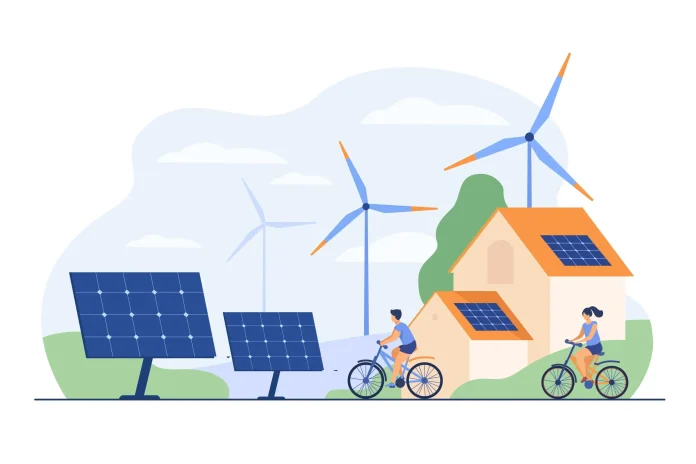Microfinance is a financing system that primarily works for people in impoverished regions. MFIs (Microfinance Institutions) form a management system to operate the activities.
These institutions provide financial benefits to poor people and help them get empowered with money and business. Microfinance institutions mainly focus on supporting SMEs (Small and medium enterprises) and women entrepreneurs.
They provide services like savings accounts, microcredit or microloans, fund transfers, checking accounts, etc. However, microcredit and providing different levels of small and medium loans are the key services they are known for.
By helping minorities with financial aid to start businesses to help them become solvent, microfinance plays a significant role in the economic development of a country.
However, operating such a financial system can be challenging, and there are a lot of hurdles to face along the path.
So, let’s address the challenges of microfinance and learn how to build sustainable models for long-term economic growth.
Relationship between Microfinance and Long-Term Economic Growth
Before getting into the challenges and the solutions, let’s look at the relationship between microfinance and long-term economic growth.
Economic Accessibility
The greater the population gets economic accessibility to run businesses, the more economic growth of the country evolves. Generally, commercial banks provide loans to people with moderate income or possessions.
They exclude the poor minorities. Microfinance provides microcredit to those excluded populations and increases their economic accessibility. Thus, they start businesses taking part in the growing economic development of the country.
Small Enterprise Expansion
With the help of microfinance, many underprivileged people get chances to make money by growing small and medium businesses. When the company expands its area of work, it needs more workers. It creates the opportunity for increased jobs. It eventually contributes to removing or at least lessening poverty and unemployment. to make money by growing small and medium businesses. When the company expands its area of work, it needs more workers.
It creates the opportunity for increased jobs. It eventually contributes to removing or at least lessening poverty and unemployment.
Skill Enhancement
Financial and business education often come in handy with microfinance. MFIs feature training and education for loan borrowers. It makes the masses skilled enough to care for their finances and carry forward their business, indirectly growing the economy.
Local Empowerment
MFIs run with different models. One of them is the group or community model. It unites the borrowers and forms a group repayment system. When working locally, empowerment increases among the borrowers and MFIs altogether.
Higher Likelihood of Self-Employment
Getting a small loan helps people start their small business from the comfort of their homes. It removes the tension of getting a job and becoming self-employed. Specifically, women can become independent by doing handicrafts and other creative business.
Challenges in Microfinance
The challenges in microfinance are immense. Here are the most common challenges in microfinance that hinder economic growth.
Excessive Debt
The biggest challenge is the borrowers are taking multiple loans from different MFIs. Due to the loan amount being beyond their repayment capacity, they stay over-indebted. The issue is no database shows their credit history.
Elevated Interest Charges
Excessive interest rates, generally from 12% to 30%, are often charged for micro-loans as the underprivileged and poor borrowers struggle to repay the money with such huge interest.
Regulatory Hurdles
The regulatory bodies for operating microfinance are not effective. As a result, the MFIs conduct their jobs however they want, which creates issues.
Inapplicable Models
There are two primary models for repayment of the borrowers. One is an individual, and the other is a group model. However, they are not practical and efficient, and the system still has problems.
Strategies for Sustainable Microfinance
Here are some possible solutions or strategies to overcome the challenges of microfinance.
Centralized Database
A national network for credit history can be a centralized database. It will show the borrowers’ credit history, making MFIs realize whether they could repay the loan. Based on that, they will accept or reject their loan application. Therefore, it will remove the issue of over-indebtedness.
Capacity building and financial literacy programs
MFIs are supposed to arrange educational facilities for the borrowers to increase financial literacy. Still, some MFIs need to follow that, and as a result, borrowers do not get any knowledge on what to do next with the money.
So, MFIs must be obligated by regulatory bodies to build capacity and arrange financial literacy programs for borrowers.
Using Technology For Microfinance Management
Microfinance regulatory authorities can invest in creating substantial and practical software to manage the whole microfinance system for lenders and borrowers. It will help both parties navigate loan processing, track payments, automatic reports, and notifications to avoid fines and take overall control of their finances.
Creating Sustainable Models
Make informed lending decisions, improve loan repayment rates, and mitigate risks for MFIs and clients. Try making a combination of individual and group models to create sustainability.
Partnerships with government, NGOs, and private sector
Government, NGOs, and private sectors can work together to manage MIFs. They can create practical regulations and policies that the borrowers and MFIs can maintain. Besides, there should be a punishment system for disobeying the rules.
Conclusion
We must understand that microfinance has the potential for long-term economic growth. So, the authorities must keep the challenges in mind and take effective measures as early as possible to help develop microfinancing rapidly and get the best benefits for the country.




